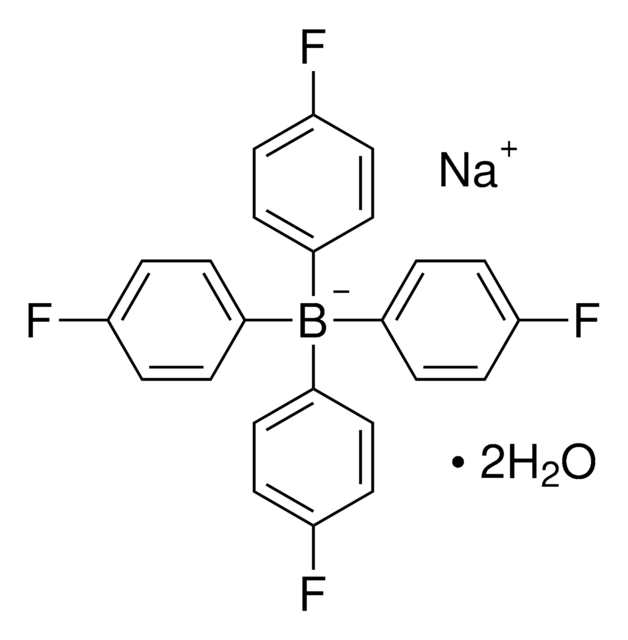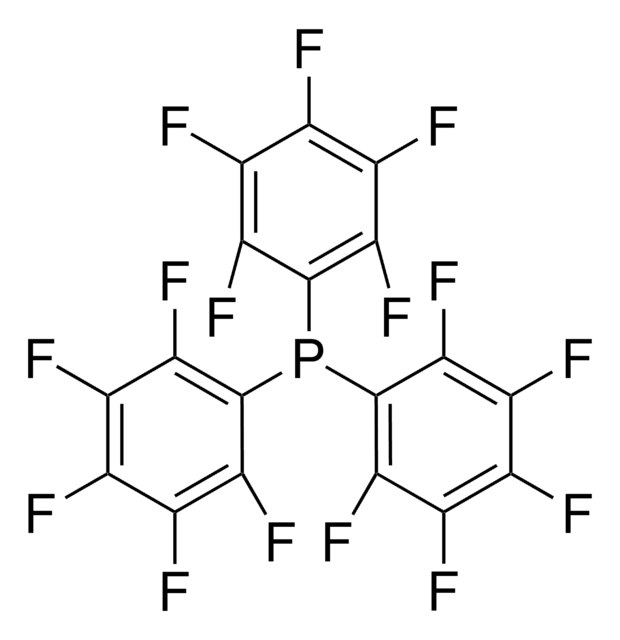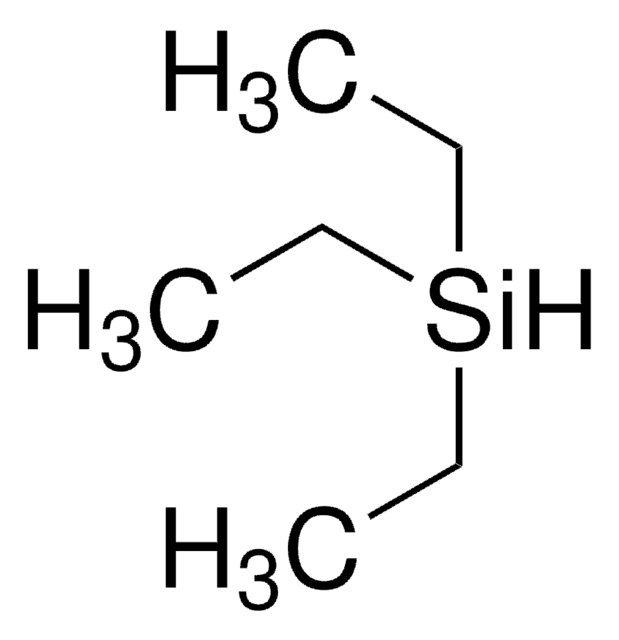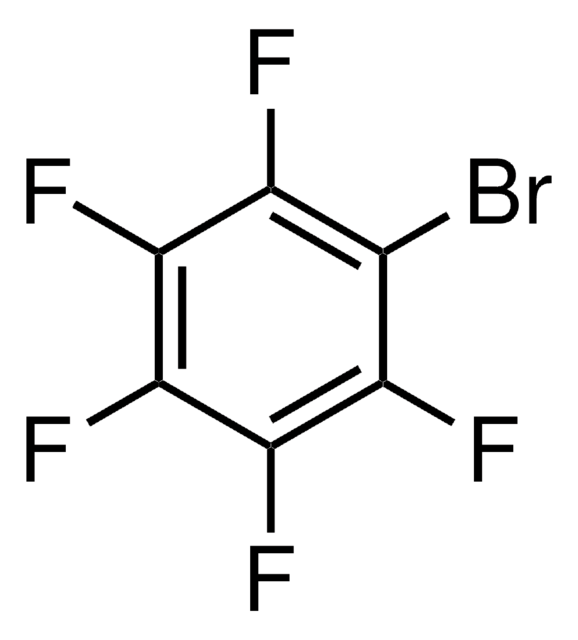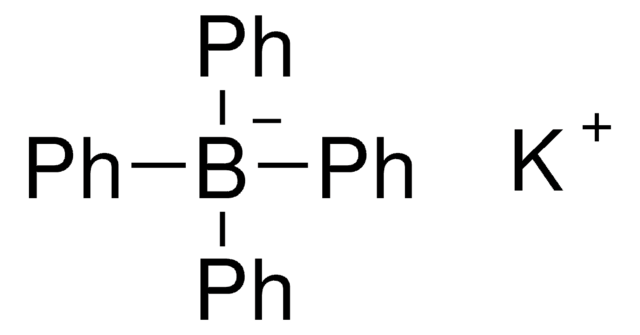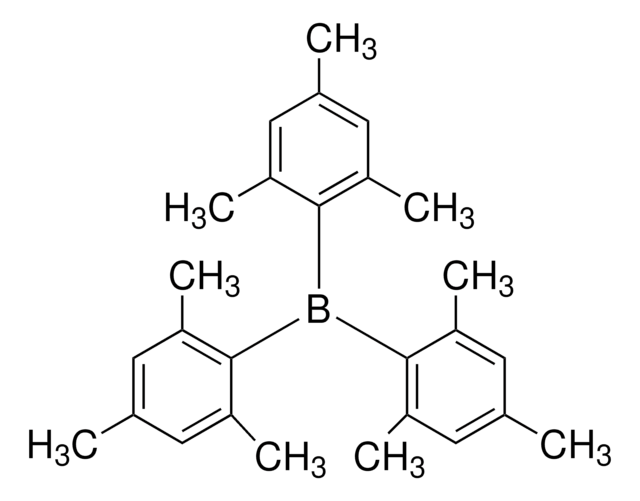17324
Lithium tetrakis(pentafluorophenyl)borate ethyl etherate
Synonym(s):
Tetrakis(pentafluorophenyl)boron lithium ethyl etherate
About This Item
Recommended Products
reaction suitability
core: boron
reagent type: catalyst
mp
117-122 °C
SMILES string
[Li+].CCOCC.Fc1c(F)c(F)c(c(F)c1F)[B-](c2c(F)c(F)c(F)c(F)c2F)(c3c(F)c(F)c(F)c(F)c3F)c4c(F)c(F)c(F)c(F)c4F
InChI
1S/C24BF20.C4H10O.Li/c26-5-1(6(27)14(35)21(42)13(5)34)25(2-7(28)15(36)22(43)16(37)8(2)29,3-9(30)17(38)23(44)18(39)10(3)31)4-11(32)19(40)24(45)20(41)12(4)33;1-3-5-4-2;/h;3-4H2,1-2H3;/q-1;;+1
InChI key
KPLZKJQZPFREPG-UHFFFAOYSA-N
Application
- A coordinating counter anion in electrochemical reactions along with transition metal catalysts to enhance their acidity or solubility.
- A catalyst in the Baeyer-Villiger oxidation of cycloalkanones to obtain lactones in the presence of aqueous hydrogen peroxide and oxalic acid.
- An activator in the synthesis of poly(norbornene ester)s.
Packaging
Other Notes
signalword
Warning
hcodes
Hazard Classifications
Eye Irrit. 2 - Skin Irrit. 2 - STOT SE 3
target_organs
Respiratory system
Storage Class
11 - Combustible Solids
wgk_germany
WGK 3
flash_point_f
Not applicable
flash_point_c
Not applicable
ppe
dust mask type N95 (US), Eyeshields, Gloves
Certificates of Analysis (COA)
Search for Certificates of Analysis (COA) by entering the products Lot/Batch Number. Lot and Batch Numbers can be found on a product’s label following the words ‘Lot’ or ‘Batch’.
Already Own This Product?
Find documentation for the products that you have recently purchased in the Document Library.
Customers Also Viewed
Our team of scientists has experience in all areas of research including Life Science, Material Science, Chemical Synthesis, Chromatography, Analytical and many others.
Contact Technical Service![Sodium tetrakis[3,5-bis(trifluoromethyl)phenyl]borate](/deepweb/assets/sigmaaldrich/product/structures/251/439/7a621e74-bfd1-4a43-833c-09adfcc1e0b3/640/7a621e74-bfd1-4a43-833c-09adfcc1e0b3.png)
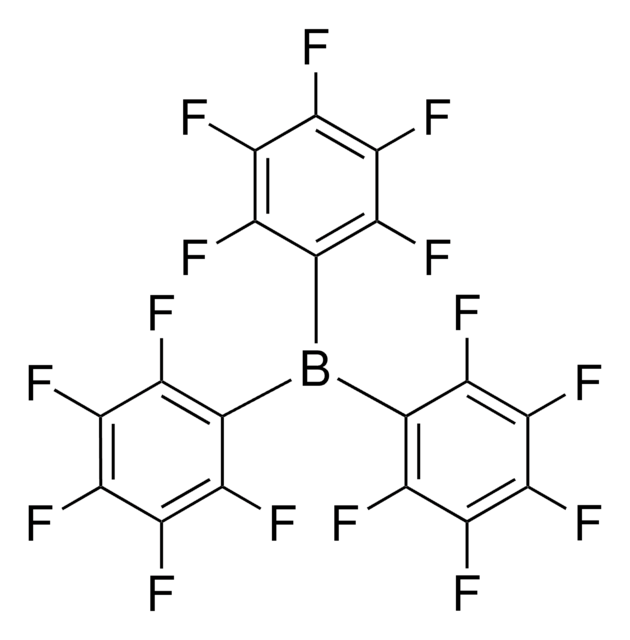
![Potassium tetrakis[3,5-bis(trifluoromethyl)phenyl]borate Selectophore™](/deepweb/assets/sigmaaldrich/product/structures/631/130/b5486f44-2e69-40d0-902f-dd71894a6add/640/b5486f44-2e69-40d0-902f-dd71894a6add.png)
